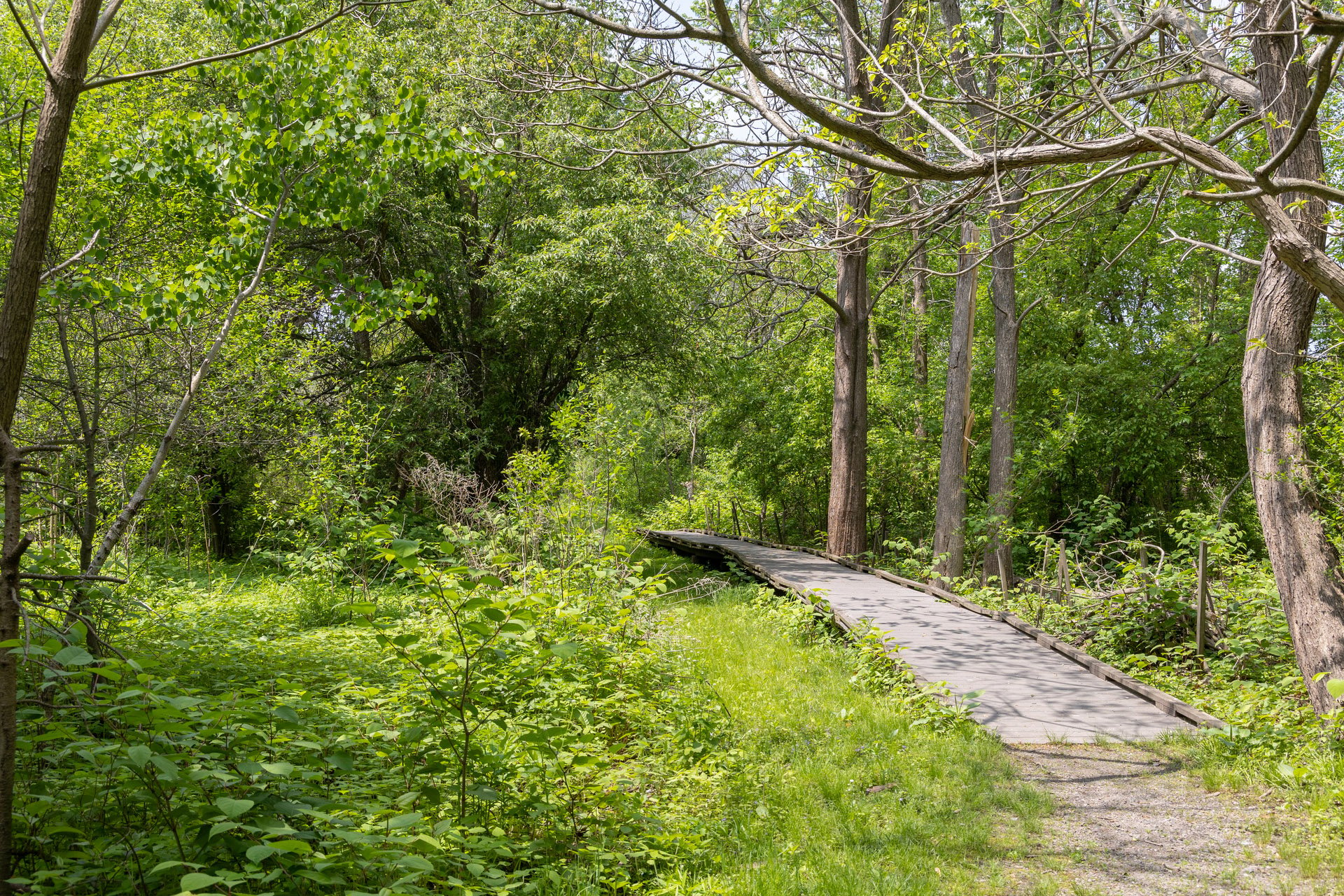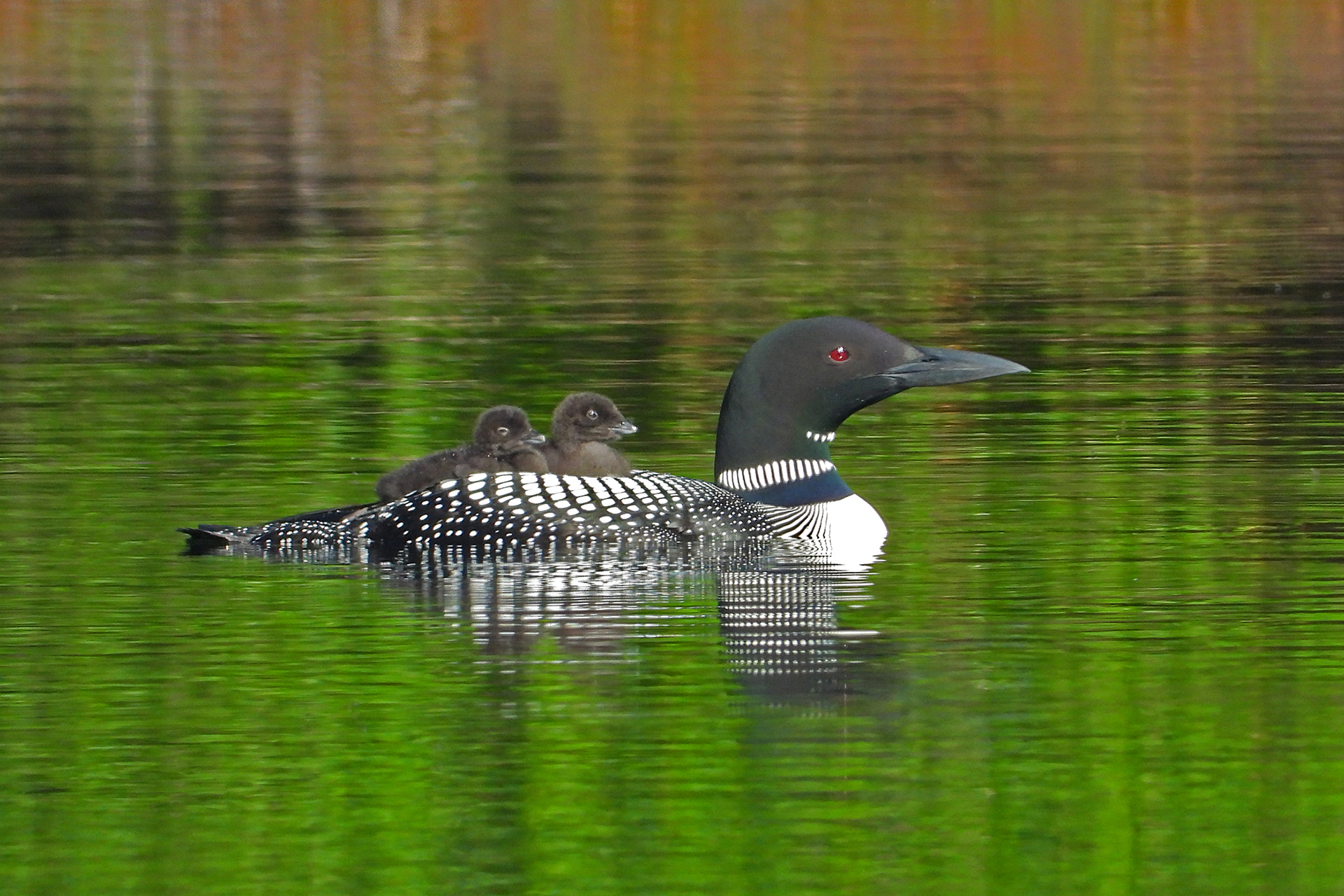You don’t need to travel hours away from the city to experience fantastic birding. Due to its proximity to the ocean and relatively ample green space, many migrating birds stop in the greater Boston area while traveling, adding to our feathered population of year-round residents. Check out these urban hotspots to find target lifers without leaving the metropolitan area.
Get Started at Boston Nature Center
Begin your city birding journey at this free-to-visit Mass Audubon wildlife sanctuary in Mattapan to learn all about the common—and not so common—birds that visit Boston. The urban oasis boasts 67 acres of greenspace, with meadows, dense forest, boardwalk trails, and a wetland overlook.
During spring and fall, a huge variety of migratory birds visit, including warblers, vireos, and sparrows. Listen for woodpeckers drumming high in the trees, while keep an eye on hawks flying overhead, sometimes even resting close to the nature center.
Whether you’re new to birding or a seasoned avian aficionado, you’ll find value in joining one of the many guided walks that Boston Nature Center offers. See what’s coming up, both at the sanctuary and around the city, in the online program catalog.
How to get there: Boston Nature Center & Wildlife Sanctuary is located at 500 Walk Hill Street in Mattapan. The Forest Hills station is about a 30-minute walk or 10-minute bike ride from the nature center. Alternatively, you can travel by bus via the #14, #21, #28, #29, and #31 routes. There is ample parking available onsite, as well as EV charging stations.
Soak In Charles River Views at Magazine Beach Park Nature Center
On the banks of the Charles River in Cambridge, you’ll find a Mass Audubon nature center that offers expansive waterside views and seasonal bird walks.
In the winter, ducks like Hooded Mergansers and Buffleheads float on the river close to shore. Come spring, warblers abound, and American Woodcocks sometimes gather to perform their iconic mating dance. Throughout the year, Peregrine Falcons soar overhead, with one pair even nesting right across the river on top of a university dormitory building.
How to get there: Magazine Beach Park Nature Center is located at 668 Memorial Drive in Cambridge. Parking is limited, so try to opt for public transit if you can. Take the green line to Amory Street or the red line to Central Square, then walk approximately 1 mile to the park. Alternatively, you can take the #47 bus to the Granite Street & Pearl Street stop, which brings you a short stroll to the park’s edge.
Marvel at the Salt Marshes at Belle Isle Marsh
Encompassing the largest remaining salt marsh in East Boston, this reservation attracts a wide array of bird biodiversity—more than 250 species visit each year.
Belle Isle’s mudflats are an attractive stopover site for birds making the long migration north to breed in the Arctic, such as Least and Semi-palmated Sandpipers. Explore the main boardwalk and overlook for excellent waterbird and raptor viewing. In spring, look for Saltmarsh Sparrows and Bobolinks arriving here to breed; plovers, egrets and ibis soak in the summer; and ducks like Buffleheads bob under the water for food in winter. Snowy Owls, which often favor the tundra-like flat, open meadows of nearby Logan airport, sometimes visit the area as well.
How to get there: Belle Isle Marsh is located at 1399 Bennington Street in Boston, about a 6-minute walk from the Suffolk Downs Station on the blue line. There is ample parking, although it can fill up quickly in the warmer months.
Look for Ducks & Shorebirds at Squantum Point Park
Exposed mudflats, sand spits, and ocean bay habitats make Squantum Point Park in Quincy a favorite for birders.
At high-tide in winter, look for Long-tailed ducks, Common Eiders, Common and Red-throated loons, and more. During summer low tide, exposed mudflats attract a variety of shorebirds and wading birds to feed on mollusks or crustaceans hiding just beneath the surface. In the fall, flocks of Double-crested Cormorants take to the skies, and spring brings thrushes, kinglets, finches, and more.
How to get there: Squantum Point Park is located on Victory Road in Quincy. Take the red line to North Quincy Station and then hop on the #211 bus to Quincy Shore Drive—from there, the park is a 1.2 mile walk or bike ride away. There is also ample parking available.
Search Open Spaces at Millenium Park
This riverside park in West Roxbury includes wheelchair-accessible trails through fields, forests, and wetlands. Make sure to stroll through the closed canopy of the Ruins Trail and stop by the boat launch to see waterbirds.
Spring and fall bring a wide diversity of songbirds, such as Savannah Sparrows and breeding Blue-gray Gnatcatchers. Raptors like Bald Eagles frequently visit, drawn to the park’s proximity to water. Bobolinks and other grassland birds' nest in the open fields. In summer, beware the intense sun—we recommend starting your walks early in the morning.
How to get there: Millenium Park is located at 300 Gardner Street in Boston. Take the #36 bus to the Veteran's Hospital stop, then walk about 15-minutes.
Go Wild for Warblers at Mt. Auburn Cemetery
A 170-acre network of ponds, lush greenery, and mature forests make this historic cemetery a popular birding destination. As one of the first cemeteries to embrace a more natural, pastoral design, Mt. Auburn in Cambridge became a hotspot for visiting birds looking for greenspace in the city.
Each spring, huge numbers of migrating birds pass through. Thrushes, orioles, grosbeaks, buntings, hawks, and owls delight early risers. Warblers, from Cape May to Bay-breasted, fill the air with their song, and are the highlight of the season.
How to get there: Mt. Auburn Cemetery is located at 580 Mt. Auburn Street in Cambridge. Take the #71 or #73 bus from the Harvard Square stop on the Red Line. The cemetery is accessible by car, but parking can get scarce in the spring, so make sure to get there when the gates open.
Spread Your Wings at Franklin Park
At 527 acres, Franklin Park wins the title of Boston’s largest open space. Its expansive woods and scenic viewing spots make for an urban birding paradise.
Head around Scarboro Pond to see ducks like the Hooded Merganser and Green-winged Teal, plus waterbirds like the Black-crowned Night Heron. During summer, flycatchers, swallows, and sometimes even hummingbirds flit about. Many spring and fall migratory birds also visit, with a variety of warblers, kinglets, and orioles. In winter, keep an eye out for Eastern Screech-Owls perched in trees.
How to get there: Frankin Park is located at 1 Franklin Park Road in Boston. The park is vast and has many entrances. The #16 bus stops at the main park entrance on Blue Hill Avenue. The closest T stop is at Green Street on the Orange Line.
Start Birding Boston Today
So, what are you waiting for? Now that you know where to look, it’s time to start exploring!
To brush up on your skills and stay up to date on who’s breeding, nesting, and migrating, join one of Mass Audubon’s Boston-based guided walks. Tour the hotspot locations mentioned here—and beyond—with one of our trusted birding experts.
Boston-area Birding Programs
See all programsMonthly Bird Walks
-
Magazine Beach Park Nature Center, Cambridge
-
Saturday, December 20
8:00-10:00am
Adults
Bald Eagle Walk Along the Neponset River
-
Neponset River Greenway, Milton
-
Saturday, January 10
8:00-10:00am
Adults & Families - 10 - 17
Winter Birding at Castle Island
-
Castle Island, South Boston
-
Sunday, January 11
8:00-10:00am
Adults
Monthly Bird Walks
-
Magazine Beach Park Nature Center, Cambridge
-
Saturday, January 17
8:00-9:30am
Adults
Winter Birding at Rexhame Beach
-
Rexhame Beach, Marshfield
-
Saturday, January 24
8:00-10:00am
Adults
Winter Birding at Castle Island
-
Castle Island, South Boston
-
Sunday, January 25
8:00-10:00am
Adults
Stay Connected
Don't miss a beat on all the ways you can get outdoors, celebrate nature, and get involved.






